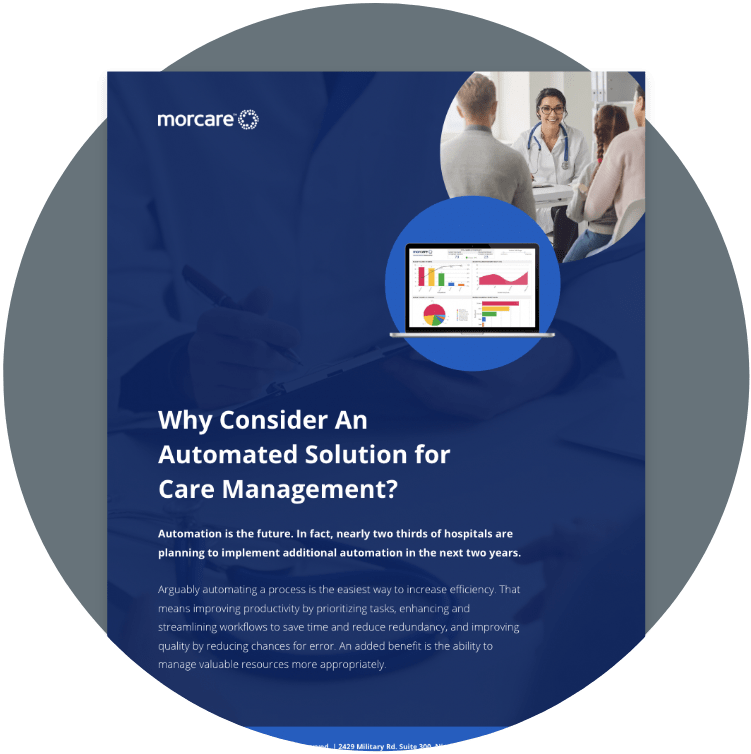Hospital readmissions occur when a patient returns to the hospital shortly after being discharged, often due to complications from their initial hospital stay. These readmissions not only impact the health of patients but also have significant financial implications for healthcare systems.
Generally, high volumes of readmissions impact the healthcare system in two significant ways. First, the hospital has to spend more resources to treat a patient for the same condition within a small window of time. This places more strain on internal capacity and staffing, which also increases operating costs.
Second, readmissions also place an additional financial burden on the patient. This issue amplifies exponentially when a patient is uninsured or underinsured and needs to furnish a significant portion of the costs themselves.
Effectively reducing hospital readmissions involves ensuring that patients receive the appropriate level of care during and after their hospital stay. This means improving care coordination, enhancing communication between healthcare providers, and providing adequate patient education and discharge planning.
By satisfying the requirements above, healthcare providers can help prevent complications and minimize the need for readmissions. In turn, this results in better patient outcomes and lower healthcare costs.
To help your own hospital minimize its readmissions, we’ll explore the factors that contribute to hospital readmissions, the benefits of doing so, and strategies that healthcare providers can use to reduce readmissions.
Common Factors Contributing to Readmissions
Hospital readmissions are often the result of a complex interplay of factors that can include patient-related, healthcare system-related, and environmental factors. Understanding these factors is critical to developing effective strategies.
Factor 1: Lack of Care Coordination
One common factor that contributes to hospital readmissions is a lack of adequate care coordination. Patients who receive care from multiple healthcare providers may experience fragmented care, which can lead to miscommunications, duplicative tests or treatments, and conflicting advice.
This siloed approach to treatment can increase the likelihood of complications and readmissions. When a patient feels confused about the best way to care for themselves following a discharge, they may not be able to follow the most effective treatment plan at home, which can interrupt their recovery.
Factor 2: Poor Communication Between Healthcare Providers
Poor communication between healthcare providers can also contribute to readmissions. Patients may receive conflicting or incomplete information from different healthcare providers, leading to confusion or misunderstandings about their care plan.
Inadequate patient education can further compound this problem. Patients may not fully understand their condition, the medications they need to take, or the warning signs of potential complications.
Inadequate Discharge Planning
Another factor that affects readmissions is inadequate discharge planning. Patients who are discharged from the hospital may not receive adequate support or follow-up care, making it more difficult for them to manage their condition at home. This can increase the likelihood of complications and readmissions.y
Environmental Factors
Finally, environmental factors can lead to readmissions. Patients who lack access to transportation or who live in areas with limited access to healthcare may find it challenging to receive the care they need. This can make it more likely for them to experience complications or miss follow-up appointments.
Benefits of Reducing Readmissions
Reducing hospital readmissions can have numerous benefits for patients, healthcare providers, and healthcare systems. These include:
Improved patient outcomes: Reducing readmissions can improve patient outcomes by minimizing the risk of complications and infections that may occur during hospital stays or after discharge. By improving care coordination and communication, patients are more likely to receive appropriate care, leading to better health outcomes.
Lower healthcare costs: Hospital readmissions are costly for healthcare systems, patients, and their families. By reducing readmissions, healthcare providers can help lower healthcare costs, freeing up resources for other healthcare needs.
Increased patient satisfaction: Patients who do not experience readmissions are more likely to have a positive experience with the healthcare system. This can lead to increased patient satisfaction and better patient-provider relationships.
Enhanced reputation for healthcare providers: Hospitals and healthcare systems that have lower readmission rates may have a better reputation among patients, healthcare providers, and payers. This can improve their standing in the healthcare market and may lead to increased referrals and revenue.
Reduced healthcare disparities: By reducing readmissions, healthcare providers can help reduce healthcare disparities. Patients who lack access to healthcare or who face other barriers to care may be more likely to experience readmissions. By addressing these barriers and ensuring patients receive appropriate follow-up care, healthcare providers can help reduce disparities in healthcare outcomes.
Strategies for Reducing Hospital Readmissions
Reducing hospital readmissions requires a multi-faceted approach that addresses the underlying factors that contribute to readmissions. Here are some strategies that healthcare providers can use to reduce hospital readmissions:
Improve Care Coordination
Healthcare providers can improve care coordination by implementing systems that facilitate communication between different healthcare providers involved in a patient’s care. This can include regular team meetings, electronic medical records, and other communication tools.
By keeping records in a secure, centralized location, providers can maintain a stronger continuity of patient data. Instead of each one working with partial information, they can all remain on the same page and contribute to the same knowledge base to better facilitate holistic care throughout the entire treatment process.
Implement More Effective Communication
Patients need to receive clear and concise information about their condition, medications, and follow-up care. This includes ensuring that patients understand their condition and how to manage it, as well as providing information about warning signs that may require medical attention.
When every doctor can work off of the same points of reference, they can more easily contribute to a single post-discharge plan. With this information, a patient can enter the next phase of their recovery with greater confidence and assurance.
Enacting Post-Discharge Follow-Up Plans
Healthcare providers can follow up with patients after discharge to ensure they understand their care plan and are adhering to it. This can include phone calls, home visits, or telehealth visits.
Leveraging Technology to Monitor Patients Remotely
Healthcare providers can use technology to remotely monitor patients’ health status after discharge. This can include remote monitoring of vital signs, medication adherence, and symptoms. This can help identify potential complications early, allowing for timely intervention and reducing the likelihood of readmissions.
Start Reducing Hospital Admissions for Your Own Organization
At MorCare, we supply hospitals with an innovative suite of healthcare management solutions to better coordinate care for patients and streamline communication and data access between providers. With an integrated approach that considers the full treatment cycle and continuum of care, you can achieve greater results with reducing hospital readmissions and ensuring a more successful post-discharge experience for patients.
To get started, connect with us today.

